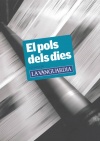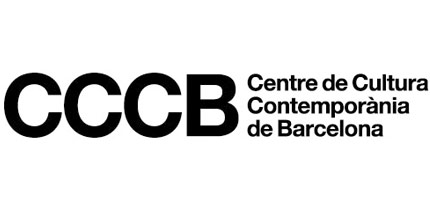Exhibition
The pulse of the days
125 years of la vanguardia
The exhibition commemorates 125 years of the newspaper, La Vanguardia, founded by the Godó brothers in 1881. It reviews this period of history through a series of articles in the different journalistic genres taken from the Barcelona daily. In this sense, it is intended as a tribute to journalism and journalists, but also to the main protagonists of the 20th century and, by the same token, to the readers whose loyalty have made this newspaper's daily undertaking possible.
The exhibition presents a total of 200 original pieces, works of art and miscellaneous objects, and some 250 reproductions of articles, front covers and photographs.
The exhibition includes an audiovisual about the graphic chronicling of these years, with 80 or so of the best front covers of La Vanguardia and a small tribute to journalism, with an audiovisual about the life of a newspaper to complete this look at the last 125 years of history.
Curators: Màrius Carol
The exhibition begins with our passage through what was, for 100 years, the revolving door of La Vanguardia, at number 28, Carrer Pelai. Two sets introduce us into the pre-war editorialoffice and print shops, which receive the visitor. The exhibition proper then begins, with a section about the editorial, which, in this case, is an article dated 1887 advocating street lighting, when there was a major battle between gas and electricity to light the streets of Barcelona.
Next, visitors enter the realm of the illustration with a travel section by Santiago Rusiñol and Ramon Casas (1889), two draughtsmen from the history of La Vanguardia, ranging from other noteworthy artists such as Nonell and Pellicer to the more recent Peret, Krahn and Labanda.
The article about the bomb in the Liceu opera house (1893) is our link to the Crime section, which includes an unexploded Orsini bomb and a selection of chilling stories of the 20th century, together with exhibits from the former Museum of Crime of the Law Faculty of Barcelona University.
The first write-up of a Barça football match (1899) and the first Picasso review (1900) represent Sport and The Arts, where we find mythical objects from the world of sport and notes on the early works of the master from Malaga.
The death notices section is a point of reference in La Vanguardia: here, the half-page front cover obituary of Father Cinto Verdaguer (1902) provides an introduction to a selection of the strangest and most famous obituaries and the exhibition of the "poor man's hearse" that was used to transport the coffins of citizens without the means to pay for their burial.
The next two spaces are devoted to the wars. The first includes the special envoy's report, revealing Gaziel's talent as a war reporter (1914). The second is an opinion article, in this case by Antonio Machado, about the role of the intellectual (1937). The built sets and videos of the civil war give these sections an added value.
The 1950s were marked by censorship, calling here for a section about the difficulties of freedom of expression. The tram strike of 1951 was practically a journalistic anecdote, and the case of Galinsoga, the editor set up (and dismissed) by General Franco, was a nightmare. The events at the Palau are also related here, despite being ignored by the press at the time.
The exhibition presents the central role of advertising, showcasing the first advert for the Biscúter; music reviews, starting with the Beatles' visit to Barcelona in 1965 and reproducing the sleeve of Sergeant Pepper, and literary reviews, offering visitors the chance to recognise the century's foremost first editions. The interview as a genre that has been cultivated from Del Arco to the three journalists of today's "La contra" section places us before a newsstand showing the front-page headlines on the day that Franco died, representing a kind of final frontier before days of freedom.
The front-page infography from 1977, showing us how to vote, the science section, devoted here to the birth of the Internet in 1990, and the importance of photojournalism, represented by the report about Khadi (1995), the girl on whom an ablation was performed, form the final part of the exhibition. Outstanding items such as the reproduction of the hominid Pau, our most distant predecessor, a selection of the best photographs of the last 125 years and the faces of the politicians who ushered in democracy are all present in this closing section of the exhibition.
"A finger on the pulse" includes an audiovisual about the evolution of graphics in the course of these years, a hundred or so of the best front pages of "La Vanguardia" and a humble tribute to journalism. The most outstanding headlines of 1 February 2006, the day the newspaper celebrated its 125th anniversary, complete a review of these years of most recent history, the hard disk of our collective memory.


